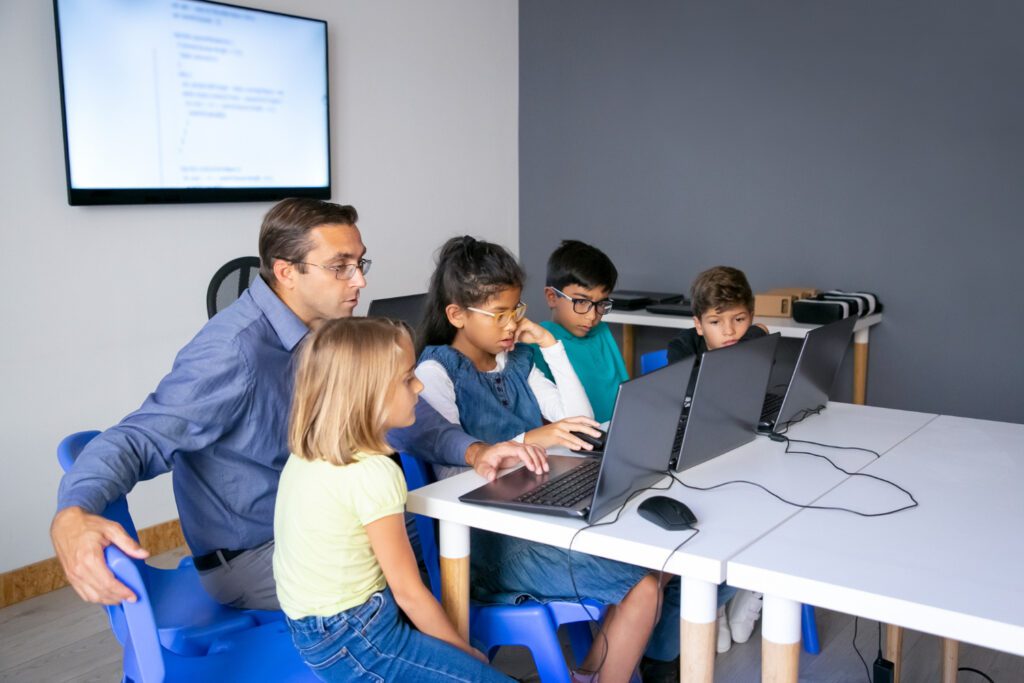Singapore has long been a leader in embracing technology across various sectors, and education is no exception. With the Smart Nation initiative driving the adoption of digital tools in classrooms, interactive screens have emerged as a pivotal part of modern education. But what exactly are these screens, and how do they enhance learning experiences in Singapore’s schools?
What Are Interactive Screens?
Interactive screens are advanced display technologies that allow users to interact with the content directly on the screen using touch gestures, digital pens, or other input devices. Unlike traditional whiteboards or projectors, these screens can display dynamic content, support interactive lessons, and enable real-time collaboration among students. Common types include interactive whiteboards, touch screen displays, and interactive flat panels.


The Role of Interactive Screens in Modern Classrooms
Interactive screens are transforming the way education is delivered in Singapore. They serve as a powerful tool to engage students actively in the learning process. By integrating multimedia elements such as videos, quizzes, and animations, these screens cater to various learning styles—visual, auditory, and kinaesthetic. This flexibility ensures that each student can learn in the way that suits them best.
Moreover, interactive screens make lessons more interactive and collaborative. Students can work together on problems, share their ideas directly on the screen, and receive immediate feedback from their teachers. This not only enhances understanding but also builds essential teamwork and communication skills.
Benefits of Interactive Screens in Singapore’s Education System
Interactive screens align perfectly with Singapore’s vision of becoming a Smart Nation. By incorporating these technologies into classrooms, students are not only learning the curriculum but also becoming proficient with digital tools they will use in their future careers. This is especially crucial as Singapore continues to develop its economy around technology and innovation.
These screens also foster collaborative learning environments. In group projects, for example, students can use the screens to brainstorm ideas, map out concepts, and create presentations, all while receiving input from their peers in real-time. This collaborative approach is critical in nurturing critical thinking and problem-solving skills, which are highly valued in Singapore’s education system.
Additionally, interactive screens prepare students for a tech-driven future. As the world moves increasingly towards digitalisation, the ability to navigate and utilise advanced technology is becoming essential. By familiarising students with these tools early on, Singaporean schools are ensuring that their students are ready for the demands of the modern workplace.
Interactive Screens and Blended Learning
The COVID-19 pandemic accelerated the adoption of blended learning, where online digital media is combined with traditional classroom methods. Interactive screens are at the heart of this model, facilitating both in-person and remote learning. For instance, during hybrid learning scenarios, teachers can use these screens to engage with students in the classroom while simultaneously reaching those at home.
Interactive screens also allow for a seamless transition between different teaching modes. Whether it’s a flipped classroom, where students review content at home and engage in discussions during class, or a fully virtual setup, these screens provide the necessary tools to make learning fluid and adaptable.


Challenges and Considerations
Despite their many benefits, the implementation of interactive screens in Singapore’s schools is not without challenges. One of the primary concerns is cost. High-quality interactive screens can be expensive, which may limit their accessibility to all schools, particularly those with smaller budgets.
Another challenge is the need for adequate training and support for educators. While younger teachers may find it easier to adapt to new technologies, more experienced teachers might require additional training to effectively use interactive screens in their teaching.
Moreover, managing screen time is a critical consideration. While interactive screens can enhance learning, excessive use could lead to negative effects, such as eye strain or reduced physical activity. Schools must strike a balance between leveraging technology and ensuring students’ overall well-being.
Government Support and Initiatives
The Singaporean government has been proactive in promoting the use of technology in education. Through initiatives like the Ministry of Education’s (MOE) ICT Masterplan, schools are encouraged and supported to integrate digital tools, including interactive screens, into their teaching practices. The government also provides grants and subsidies to help schools with the cost of implementing these technologies.
Conclusion
Interactive screens are reshaping education in Singapore, making it more engaging, collaborative, and future-ready. While challenges remain, the benefits of these tools in enhancing learning outcomes and preparing students for a tech-driven world are undeniable. As Singapore continues to pursue its Smart Nation vision, the role of interactive screens in education will only grow, promising an exciting future for the nation’s learners.
